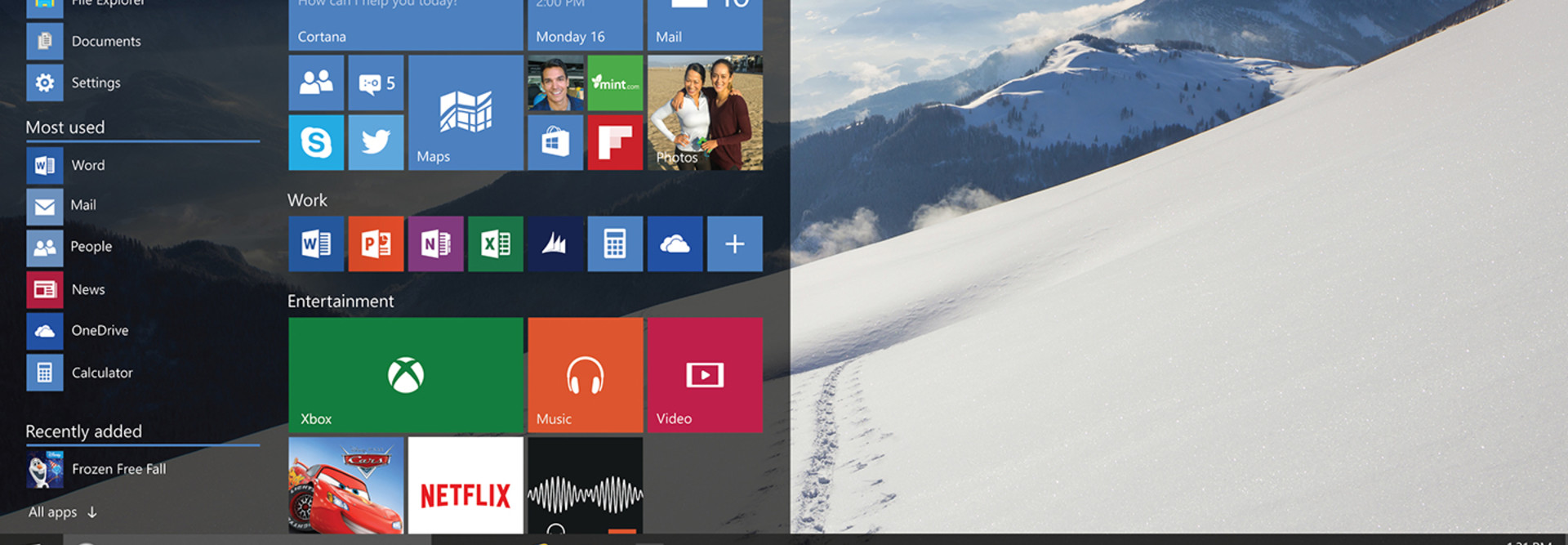TSA, Social Security Administration Push Ahead with Windows 10 Upgrades
The Department of Defense has grabbed many headlines this year thanks to its push to upgrade the entire department to Windows 10 by January 2017. However, many other agencies are moving ahead with similar software migrations, and two that are at the forefront include the Transportation Security Administration (TSA) and Social Security Administration (SSA).
The agencies hope that by moving to Windows 10 they can gain more solid footing in terms of enterprise-wide security protections. Moving to the new platform can also ensure that they will be able to maintain more up-to-date software.
Making the Move to a Future-Proof Platform
The TSA and SSA are trying to one-up each other with their migration plans. “We’re planning for TSA to be one of the first, largest agencies to roll out Windows 10, starting in about three weeks,” said Guy Cavallo, TSA's executive director of IT operations, at a May 24 FedScoop event, according to FCW.
“We’re in a race then because SSA has made the same decision,” SSA Deputy Chief Information Security Officer Andy Coale added at the event.
Cavallo, who previously worked at Microsoft and business intelligence firm Pyramid Analytics before coming to the TSA in January 2015, said that when he joined the agency he discovered servers running Windows 2003 and computers using Windows XP. That spurred his decision to move ahead aggressively toward Windows 10.
"I know it’s a natural inclination if you’re on Windows 7 now to go to 8 or 8.1, but guess what — you've got another end-of-life coming," Cavallo said.
Microsoft has confirmed that, following Windows 10’s release last July, it will not release a new version of its operating system, and will instead update Windows 10 regularly through software updates, turning to the model of “Windows as a service.”
“Windows 10 is the promised land,” Cavallo said. “Microsoft is swearing that there is no Windows 11.”
Cavallo said that the switch to Windows 10 will help the TSA cut costs and also meet users’ expectations for modern software, according to FCW. Noting that there is a Best Buy across the street from TSA headquarters, he said, “If one of our end users went across the street, would they buy a laptop with Windows 7 and Office ‘10 on it? No, they’re going to take home Windows 10 and Office ‘16, so that's what we're doing at TSA.”
Like other federal agencies, the TSA and SSA have had to deal with older hardware not being compatible with the new software. Yet Coale added that after SSA makes the switch to Windows 10 it will still have many applications running in compatibility mode “for a very long time” because of a reliance on legacy applications.
DOD Makes Windows 10 Upgrade a Top Mission Priority
The Windows 10 upgrade at the DOD is using a “secure host baseline” that includes not only the Windows 10 operating system, but additional mission-specific secure applications that have been preconfigured as well. In the past, previous operating system upgrades that DOD undertook only included the operating system software.
Although Robert Work, the deputy secretary of defense, told DOD components in February that they would need to upgrade to Windows 10 no later than Jan. 31, 2017, there is some leeway in the plan.
As Federal News Radio reports: “During 2017, the CIOs of the individual military services will be allowed to grant waivers for commands within their services that haven’t yet met the deadline. After that, any requests to stay on older operating systems would have to be approved by the DOD CIO.”
DOD CIO Terry Halvorsen has said service branches or components that do not meet the deadline will face consequences. “I’m not going to get into the specific repercussions,” Halvorsen said in April, according to Federal News Radio. “But the first repercussion would be around how people are spending their money.”
Meanwhile, the Army Corps of Engineers is pushing ahead with its own Windows 10 upgrade. Brigadier Gen. Dennis Crall, CIO of the Marine Corps, said at an AFCEA DC event on May 11 in Arlington, Va., that the Marines understand the benefits of the secure host baseline approach and moving to Windows 10; however, they are having difficulty achieving those benefits because the Marines have so much old hardware that cannot be updated to Windows 10. He said that the Marines initially thought 60 to 70 percent of the service branch’s Windows devices could be updated over the network without the need to upgrade hardware, but that was a wildly optimistic estimate.
Crall said that the Marines are working with Microsoft engineers on the upgrade and that he is ”very optimistic” that the service will work through the challenges.









